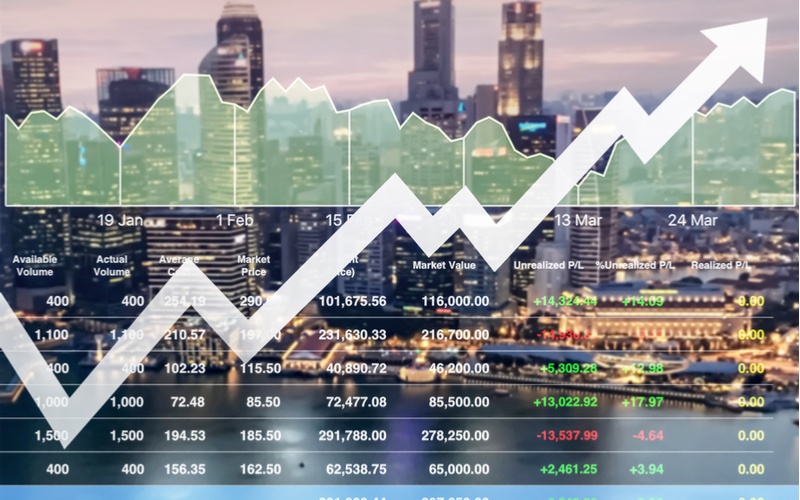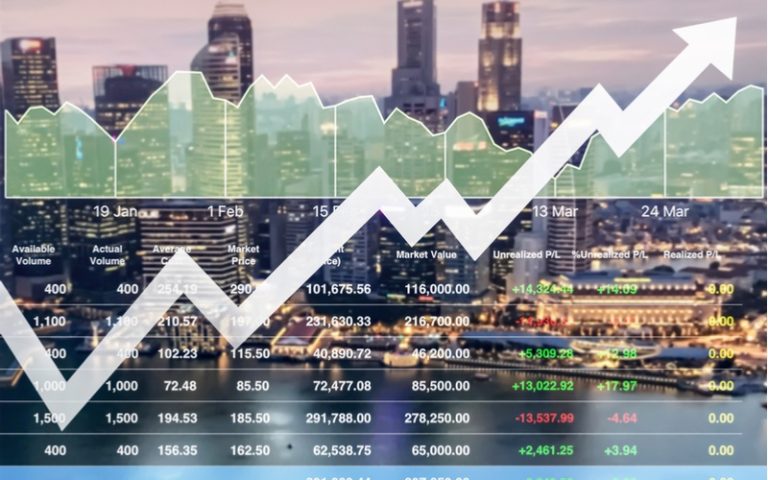
Here’s our guide to this phenomenon and its uses in options trading…
Implied Volatility Skewness Background
Implied volatility (IV) describes the market’s expected volatility ‘implied’ by its price.
Five factors govern options prices:
- Stock Or Underlying Security Price (which we know from the market price)
- Strike Price (Known)
- Time To Expiry (Known)
- Interest Rate (Known)
- Implied Volatility (Not Known)
Therefore if we know an option price, and we know the other four factors, we can calculate the one unknown, the implied volatility (using a simple online calculator for example).
If we were to look at an option over the same underlying and with the same time to expiry (and with interest rate and stock price known) we could calculate IV for each option at each strike price.
According to standard options theory, such as the Black-Scholes equation, implied volatility is the same for options of the same underlying security and expiry date.
But that’s not what’s observed in the market. Indeed, as we shall see, there are many reasons why IV is actually different. This is termed vertical skew, or skew for short, and is best illustrated with an example.
Volatility Skew Example
Suppose AAPL is trading at $120 in April. You look AAPL’s June option chain and see the following put option prices:
- AAPL 100 Jun Put 20
- AAPL 110 Jun Put 24
- AAPL 120 Jun Put 36
- AAPL 130 Jun Put 44
- AAPL 140 Jun Put 54
You calculate the IV for each of these:
- AAPL 100 Jun Put 15
- AAPL 110 Jun Put 10
- AAPL 120 Jun Put 8
- AAPL 130 Jun Put 10
- AAPL 140 Jun Put 15
As you can see the IV is different for each strike price.
The underlying reason why these implied volatilities don’t follow traditional options theory is the market. Ultimately options are priced not by theories, but by the forces of supply and demand.
If, as in this case, there is more demand for options at a particular strike price over another, its IV will be greater, all other things being equal.
The above example is a common type of skew in the market – the so-called ‘volatility smile’
Volatility Smile
We can plot IV against the strike price for our example above:

This is an example of a Volatility Smile, so-called because of the graph’s shape.
Traders often have a greater demand, all things being equal, for options away from the money – usually because they wish to protect against breakout of the stock.
The phenomenon started to appear after the 1987 stock market crash. Traders have tended to price into options the effect of extreme events, by bidding up ITM and OTM options.
Volatility Smirk
Here’s another pattern that is often seen in the options market: the volatility smirk.
Suppose the implied volatility of our puts is even higher out of the money (ie less than $120 in our AAPL example), then the shape of the volatility curve would be:

This ‘volatility smirk’ is often seen in out of the money put options when traders are expecting a stock to fall (or at least there is a heightened risk of it doing so).
Then out of the money puts are popular – they are used often to protect a stock position as we’ve seen in our article on ‘protective puts’ – and their price (and hence their IV) is bid up.
Note that due to put call parity, if the IV of an OTM put is elevated, the ITM call at the same strike price is also elevated (and vice versa).
Reverse & Forward Skew
The above is an example of ‘reverse skew’: IV is higher for lower strike prices.
The other type of volatility smirk is when higher strike price options have a higher IV.
This is common in commodity markets where traders use out of the money call options to lock in future demand for commodities (eg coca-cola securing future sugar supplies).
This elevated demand for OTM calls pushes up their price, and hence IV causing a forward skew smirk. For example:

Volatility Smirk (Forward Skew)
How Volatility Skewness Can Be Traded
Sophisticated traders can use skew when it occurs to produce profitable trades. Here are a couple of examples:
OTM Bull Put Spread
One such example is trading the reverse skew of OTM puts mentioned above when a stock has fallen in price, but is believed to have bottomed out.
An OTM bull put spread, comprising a sold put and a purchased further OTM put could be placed for a substantial credit given the puts’ elevated implied volatility.
Should the stock start to rise both the delta of the bull put spread and the reduction in IV due to the stock increase would make the options spread fall in value. The credit trade could therefore be closed out cheaply and at a profit.
OTM Put Calendar Spread
The disadvantage with the above Bull Put Spread is the purchased put also has elevated IV, reducing the credit obtained from the trade.
An alternative would be to buy an OTM put calendar spread – particularly if the skew effect is only observable in short dated options (often the case when a stock’s fall is seen as temporary).
A short OTM put, with its elevated IV, is sold and a longer dated put with the same strike price, but lower IV, is purchased.
Should IV fall – if the stock starts to move higher for example – the price of the short option will fall disproportionately more (IV is no longer elevated) and the spread can be sold for a profit.
The risk is that the stock moves too far: calendar spreads fall in value the further the stock moves from the underlying.
However, a continued fall in stock price is protected as the underlying moves towards the strike price of the OTM calendar spread (but wouldn’t enjoy any reduction in IV).
As can be seen, these are complex trades and should only be made by sophisticated investors.
Conclusion
So there you have it. Volatility skew is a common market phenomenon caused by sound economic reasons, but ones which don’t conform to some of the standard options pricing theories.
It can be used by traders to construct complex profitable trades.

